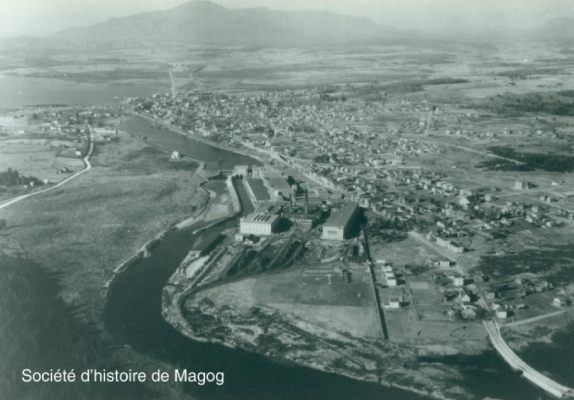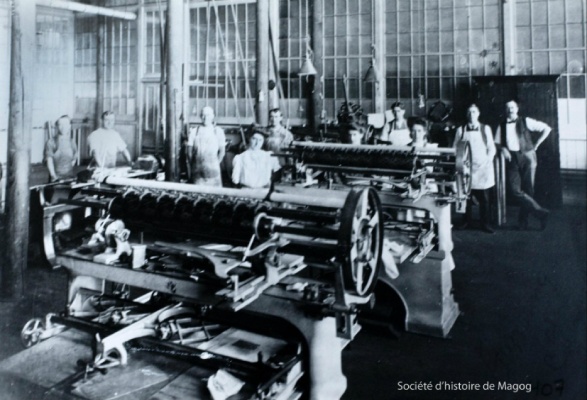Magog Textile Mill National Historic Site
The Magog Textile Mill was designated a National Historic Site in June 1989.
Historical importance: Only 19th century mill where the entire process of spinning, weaving, bleaching and printing was carried on at one site; built in 1883.
The Magog Textile Mill
In 1883, Alvin Moore and William Hobbs founded the Magog Textile and Print Company. They built a facility on the banks of the Magog River and, in the spring of 1884, the plant printed the first pieces of cotton in the country. Until 1899, it was the only mill in Canada that printed cotton.
In 1888, the company added an additional mill and began to spin and weave. By bringing together spinning, weaving, bleaching, and printing operations in a single industrial complex, the Magog Textile Mills played an important role in the consolidation of the cotton industry in 19th-century Canada.
In 1889, financial difficulties at the Magog Textile and Print Company led to the sale of the facility to Hochelaga Cotton Co. The following year, Hochelaga Cotton Co. was integrated with Dominion Cotton Mills. In 1905, the latter merged with several other companies to form Dominion Textile. Dominion Textile experienced strong growth throughout the 20th century, expanding the industrial complex in Magog with many new buildings. This was made possible in part by the growing workforce in Magog. During the 1930s, while an economic crisis was raging across the country, Dominion Textile continued its expansion, accounting for about 80% of Magog’s manufacturing jobs. By 1943, there were 2,300 people working at Dominion Textile.
Textile workers in Magog joined the labour movement during the 20th century to improve their working conditions, forming unions and organizing multiple strikes. For example, they participated in the Quebec textile industry’s strike in 1937. In 1945, the Syndicat Catholique des Ouvriers du Textile de Magog signed its first collective agreement, having successfully negotiated substantial improvements for workers. Various labour disputes, in particular concerning performance and task management, led to further strikes, with the final one taking place in 1966.
The second half of the 20th century was marked by the decline of the textile industry in Quebec, brought about in part by the globalization of trade. Dominion Textile continued to modernize its industrial facilities while pursuing new international markets during this period. The Magog site was operated by Dominion Textile until 1989, when it sold the print works to American company, C.S. Brooks. In 1998, the spinning mill was sold to Difco Performance Fabrics Inc. The print works closed in 2008, followed by the spinning mill three years later.
Backgrounder last update: 2021-11-03
The National Program of Historical Commemoration relies on the participation of Canadians in the identification of places, events and persons of national historic significance. Any member of the public can nominate a topic for consideration by the Historic Sites and Monuments Board of Canada.
- Date modified :




